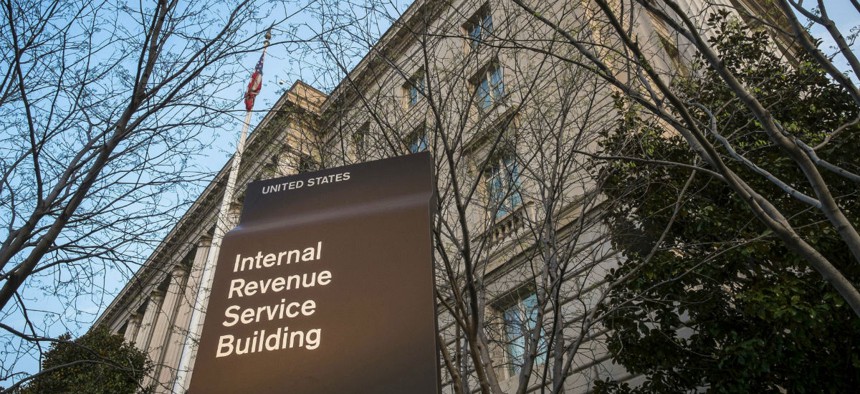
AP file photo
IRS Employees May Be As Stressed As Taxpayers
A 21 percent staffing cut since 2011 is taking a toll on the agency.
A walk-in taxpayer assistance center run by the Internal Revenue Service in Los Angeles experienced such long lines at the start of the 2016 tax filing season that it began requiring appointments. Only the elderly or those with disabilities were provided face-to-face help by the understaffed IRS center, which lacks even basic tax forms and publications to distribute, according to Tony Reardon, president of the National Treasury Employees Union.
“Many taxpayers are furious, and some so unruly they had to be escorted from the building,” he said in a call to reporters on Thursday. “Employees are feeling extremely stressed out, sick days are up, and some have quit.”
The union is pressing Congress to fully fund President Obama’s request for an additional $1 billion for the IRS in 2017. According to new NTEU data, the agency has lost 22,808 full- and part-time employees nationwide—a 21 percent staffing cut—since 2011, when a five-year budget cut totaling $1.2 billion kicked in. The number of tax returns received during that time period rose from 150 million to 160 million, Reardon said.
Move your cursor over the map below to see IRS staff reductions by state:
The $290 million Congress and President Obama negotiated for the tax agency last fall allowed for the hiring of 1,000 temporary workers during filing season, Reardon acknowledged. “That helped a little in terms of customer service, but it’s absolutely nowhere close to being enough,” he said. “The IRS is continuing to struggle to deliver for the American taxpayer, and there’s no question that it needs more resources, more personnel to meet demand for taxpayer services and to catch tax cheats and criminals.”
Warning of rising identity theft and continuing uncollected revenues, Reardon released a state-by-state accounting of where the job cuts have hit hardest. Delaware and Alaska topped the list with a 41.4 percent reduction in force, NTEU calculated, followed by Montana at 39.2 percent, Hawaii at 37 percent and Wyoming at 36.5 percent.
California saw the most employees cut in raw numbers, with 3,776 employees having left the IRS payroll.
The NTEU’s public lobbying blitz came as the Government Accountability Office on Thursday released a report dated March 8 documenting that IRS has improved its customer telephone service in 2016. In a letter to members of the Senate Appropriations Committee, the watchdog said, “Processing of individual income tax returns in 2016 has gone relatively smoothly through mid-February.” The percentage of callers who get through to gain assistance is projected to rise from 38 percent last year to 47 percent for fiscal 2016—including 65 percent for filing season, which ends April 18, GAO wrote.
IRS also projects average telephone wait times will improve from about 31 minutes per call in 2015 to about 26 minutes in 2016, though that remains twice as long as was reported in 2011, before the budget cutting.
“Given additional resources in fiscal year 2016, IRS has taken steps to improve service and operations in key areas,” GAO wrote. “However, additional funding is not the only solution. IRS has flexibility in how it allocates resources—including user fee revenue—to ensure that its resources are used effectively. After years of taking short-term actions such as limiting hiring and curtailing overtime, IRS is taking steps to strategically manage its resources by identifying priorities in formulating its 2017 budget request.”
Reardon said that if Congress provides a funding hike, it should be applied “across the board,” in enforcement as well as customer service. He also warned that the “negative rhetoric” against the IRS from Congress and elsewhere “makes it challenging. You’ve got an agency of really talented front-line employees dedicated not only to their jobs but the country. This rhetoric needs to end,” he added, “so we can focus on the best interests of the country.”
Eric Katz contributed to this report.







